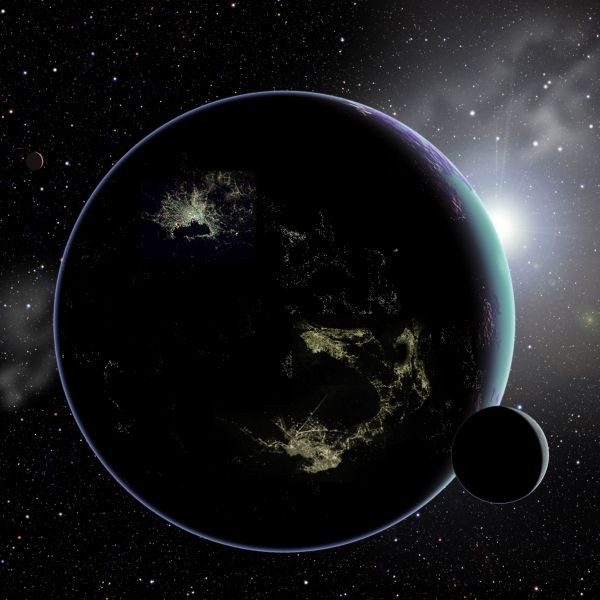In Alien Search, City Lights Could Reveal Civilization

In the hunt for extraterrestrial intelligence, astronomers have searched for radio signals and ultra-short laser pulses in an attempt to find an alien civilization within our universe.
Now, astrophysicists suggest a new technique in the search by looking for their city lights.
"Looking for alien cities would be a long shot, but wouldn't require extra resources. And if we succeed, it would change our perception of our place in the universe," said Avi Loeb of the Harvard-Smithsonian Center for Astrophysics.
Researchers are relying on the assumption that aliens would use Earth-like technologies.
The authors wrote that this is “reasonable because any intelligent life that evolved in the light from its nearest star is likely to have artificial illumination that switches on during the hours of darkness.”
So how easy can it be to spot a city on a distant planet?
It would not be so easy, but maybe possible if there is in fact, an E.T. civilization close enough to our universe which astronomers can detect.
The light would have to be distinguished from the glare from the parent star. Both Loeb and Edwin Turner, of Princeton University, suggest looking at the change in light from an exoplanet as it moves around its star.
As the planet orbits, it goes through phases similar to those of the moon. When the moon is in a dark phase, more artificial light from the night side would be visible from Earth than reflected light from the dayside.
So the total flux from a planet with city lighting will vary in a way that is measurably different from a planet that has no artificial lights, the researchers wrote.
However, spotting such a tiny signal would require future generations of telescopes. But according to researchers the technique could be tested closer to home, using objects at the edge of our solar system.
Both Loeb and turner figured that today’s best telescopes ought to be able to see the light generated by a Tokyo-sized metropolis at the distance of the Kuiper Belt, the region occupied by Pluto, Eris and thousands of smaller icy bodies.
"It's very unlikely that there are alien cities on the edge of our solar system, but the principle of science is to find a method to check," Turner said. "Before Galileo, it was conventional wisdom that heavier objects fall faster than light objects, but he tested the belief and found they actually fall at the same rate."
As our technology has moved from radio and TV broadcasts to cable and fiber optics, we have become less detectable to aliens, the researchers wrote.
If the same is true of extraterrestrial civilizations, then artificial lights might be the best way to spot them from afar.
Published by Medicaldaily.com



























